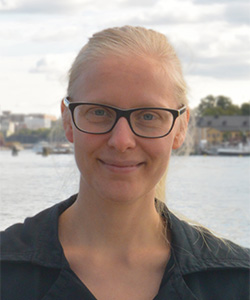Researchers able to study reactions at a new level of detail

An international team of researchers has been able to study chemical reactions in the most detail to date – tracking a single valence electron as ammonia dissociates upon absorption of light. Taking an important step toward being able to see the electrons that are involved in chemical bonding and reactivity.
“It lets us look at physics and chemistry in a way we couldn’t before,” Nanna Holmgaard List says.
Valence electrons are an atom’s outermost electrons and define its chemical behavior. They are shared between atoms and responsible for forming and breaking bonds, carrying electrical current, and driving the reactions that power everything from biology to batteries.
Due to their size and speed, however, valence electrons are quite hard to study in detail. But recently, a research team led by Stanford University, KTH and the University of Birmingham were able to do just that in an experiment at SLAC National Accelerator Laboratory in California. With a giant x-ray laser, they got direct images of individual valence electrons as ammonia dissociated.
“Chemistry is driven by electrons – how they move, how they bond atoms together, how they change during reactions. But actually seeing those electrons in action is incredibly difficult. This research brings us closer to doing just that,” List says.
Hard to capture
To understand just how hard these reactions are to capture, keep in mind that the research team studied the valence bonding electrons over a few hundred femtoseconds. There are 1015 femtoseconds in a second.
According to List, the results can be compared to adjusting the image contrast to reveal a faint feature that was invisible before. By working with ammonia, the researchers were able to make the valence electrons stand out against the background of core electrons.
“That opens up new possibilities for understanding and controlling the molecules, materials and reactions that shape our world,” List says.
Theory played a central role in this project from its outset – helping shape the scientific question and guiding the choice of ammonia as the molecular target. As the theoretical chemist on the team, List’s calculations were a key part of the proposal the scientists used to secure beamtime at the LCLS x-ray laser and essential to uncover the valence electronic motion from the experimental data.
In many collaborations, theory is brought in only after an experiment has been done, to help interpret the results, List explains. But in this project, theory was part of driving the experiment from the very beginning.
“I find this kind of mutualism one of the most powerful ways to push both experimental and theoretical frontiers and drive scientific discovery,” List says.
Jon Lindhe

